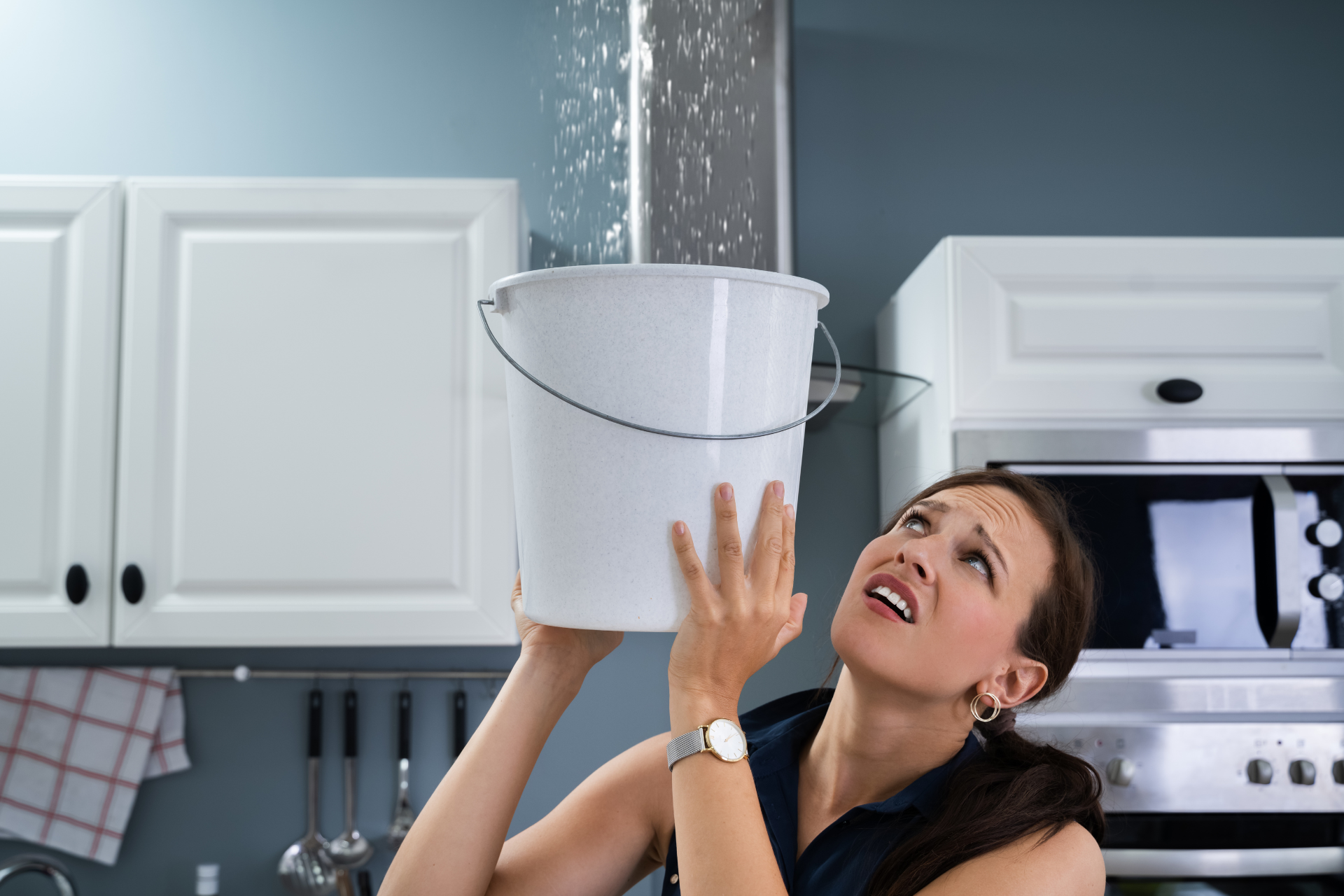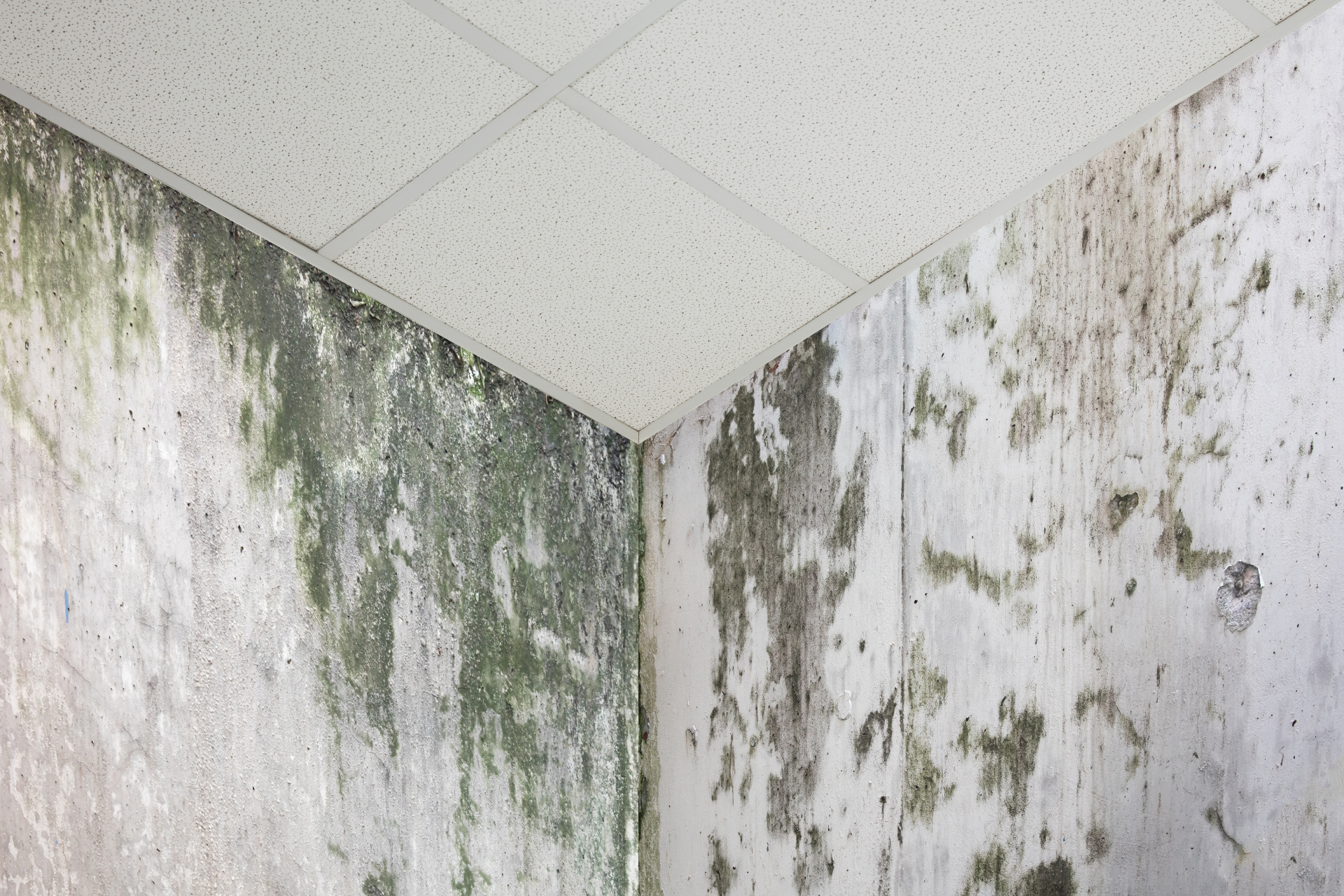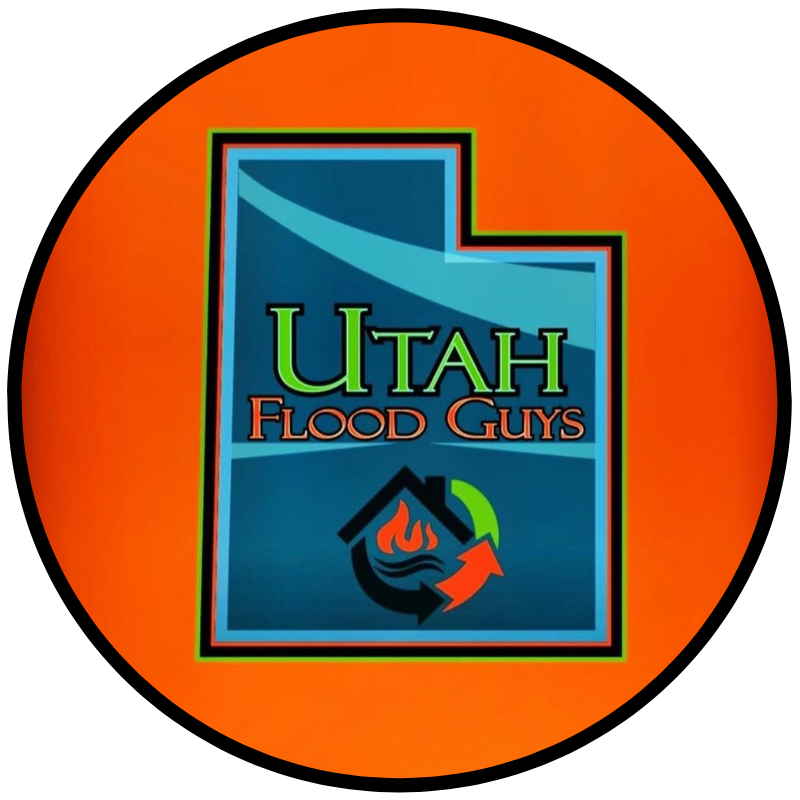Dishwasher Water Damage: Complete Prevention & Recovery Guide
Picture this: You start the dishwasher before bed, same as every night. But instead of waking up to clean dishes, you're greeted by a kitchen lake that's spreading toward your living room. If you're lucky, you catch it before it reaches the hardwood. If you're not, well–that's why we're writing this guide.
Dishwasher water damage might sound minor compared to basement floods, but here's the reality check: the average dishwasher pumps out 6-10 gallons per cycle. When that water ends up on your floor instead of down the drain, it doesn't just puddle politely in front of the appliance. It travels under cabinets, seeps into subfloors, and finds every gap in your kitchen's defenses.
Here in Utah, we see more dishwasher failures than you'd expect. Our notoriously hard water wreaks havoc on seals and valves, while dramatic temperature swings stress supply lines. Let's walk through what actually happens when your dishwasher decides to throw a tantrum, and more importantly, what you can do about it.

When Your Dishwasher Floods: The First 30 Minutes Matter
Okay, it happened. There's water everywhere, your socks are soaked, and you're wondering if this is what they mean by "kitchen island." Take a breath. How you handle the next half hour makes the difference between mopping up a mess and calling your insurance company about major water damage restoration.
First things first–stop that water. But here's the thing: don't just hit the cancel button. We've seen too many homeowners make this mistake, triggering a drain cycle that pumps even more water onto their floor. Instead, reach under your sink and turn off the water supply valve. Can't find it? No valve? Time for the nuclear option–shut off your home's main water supply. Sure, it feels like overkill, but trust us, it beats watching helplessly as another 10 gallons join the party.
Next up is the electricity situation, and this is where things get serious. Water and electricity go together like, well, they don't, and that's the point. Kill the power to your dishwasher at the breaker box, and while you're at it, turn off the kitchen outlets too. Many Utah homes have shared circuits in the kitchen, and the last thing you need is to discover this the hard way. If you're already standing in water, grab a wooden broom handle to flip that breaker, or throw on some rubber boots. This isn't the time to test your luck.
Now, before you grab every towel in the house, grab your phone instead. Your insurance company is going to want evidence, and future-you will thank present-you for documenting everything. Snap photos from every angle–the water source, how far it's spread, what's getting wet. Open those cabinets and photograph inside too. We know it feels weird taking pictures while your kitchen's flooding, but this documentation is gold when it comes to claims.
Finally, let's talk extraction. Every minute that water sits is another minute it's seeping deeper into places it shouldn't be. If you've got a wet/dry vacuum, you're in business. If not, those towels can come out now. But here's the strategy: work from the outside edges toward the dishwasher, creating a barrier that prevents spread into other rooms. And please, check the adjoining rooms–water's sneaky and loves to travel along baseboards when you're not looking.
The Hidden Side of Dishwasher Water Damage (What to Know)
Here's where dishwasher water damage gets interesting... and by interesting, we mean expensive if you miss it. That puddle you're mopping? It's like an iceberg. The real action is happening underneath, behind, and inside places you probably forgot existed.
Let's start with your cabinets. They look fine from the outside, right? Open them up and run your hand along the bottom. Feel that? If it's soft, swollen, or feels different than it should, you've got a problem. Most kitchen cabinets are made from particleboard, which basically turns to mush when wet. People have torn out gorgeous custom cabinets that looked perfect from the front but were completely rotted underneath. The water wicks up into the walls behind them too, creating what we call "mold hotels"–dark, damp spaces where nobody's looking.
Then there's your subfloor, the unsung hero that's probably taking the worst beating. Your kitchen floor is actually a sandwich–nice flooring on top, underlayment in the middle, and subfloor (usually plywood or OSB) at the bottom. When dishwasher water damage occurs, it soaks through all three layers like coffee through a cheap napkin. OSB is particularly dramatic about getting wet; it swells up, loses all its strength, and never quite recovers. You'll know you've got subfloor issues when your kitchen floor starts feeling like a trampoline in certain spots.
But the real villain in this story? The toe kick area. That recessed space at the bottom of your cabinets where your toes go when you're doing dishes. It's basically a horizontal cave that collects water but never gets air circulation. Moisture trapped in there is like a ticking time bomb. Pull off those toe kick panels after any kitchen flood cleanup, and you might find anything from minor water stains to full-blown science experiments growing in the dark.

Why Utah Dishwashers Fail: The Hard Truth About Hard Water
Let's have an honest conversation about Utah water. It's harder than trying to explain cryptocurrency to your grandmother, and it's slowly assassinating your dishwasher from the inside out.
Utah's water contains enough dissolved minerals to practically qualify as a liquid rock. We're talking 180+ parts per million in many areas, when anything over 120 is considered "hard." These minerals–mainly calcium and magnesium from our limestone-heavy geology–don't just leave those annoying spots on your glasses. They're building up inside every component of your dishwasher like tiny cement deposits.
Your door seal is usually the first casualty. That flexible rubber gasket should create a watertight seal around your dishwasher door, but mineral deposits turn it into something more like sandpaper. The seal tries to compensate by stretching, but eventually develops tiny cracks. In other states, door seals last 10 years easy. Here in Utah? You're lucky to get six or seven before they start letting water escape during cycles.
The water inlet valve is fighting its own battle. This little component controls water flow into your dishwasher through passages smaller than a coffee straw. Minerals gradually narrow these passages like cholesterol in arteries, forcing water pressure to increase. Eventually, the minerals prevent the valve from closing completely, creating a slow, continuous leak that does massive damage before anyone notices. It's not dramatic–just persistent, like that friend who won't stop talking about their workout routine, and then you’re left adding kitchen appliance leak repair to your to-do list.
The solution seems obvious: get a water softener. But the plot twist is, it's not that simple. Too soft, and your water becomes corrosive, eating away at metal components. Too hard, and you're back where you started. The sweet spot is around 60-80 ppm, and even then, you need to remember that softened water needs way less detergent. Use your normal amount, and you'll create a bubble party that forces suds past your door seals.
Insurance Coverage: What They Will (and Won't) Pay For
Nobody dreams about reading insurance policies, but understanding what's covered before disaster strikes is like having a financial fire extinguisher ready to go.
Here's the good news: most homeowner's insurance covers sudden and accidental water damage. Your dishwasher randomly deciding to recreate Niagara Falls in your kitchen? That's typically covered. The key words here are "sudden" and "accidental." Insurance companies are surprisingly understanding about appliance failures that happen without warning. They'll usually cover the water damage restoration, the ruined flooring, the destroyed cabinets–basically everything the water touched.
But here's what trips people up: they won't pay for the dishwasher itself. Think of it like a car accident where insurance covers the damage your car causes, not the car repairs. So while they'll handle the $5,000 in water damage, that $800 dishwasher replacement is coming out of your pocket unless you've got separate appliance coverage.
The documentation game is everything when it comes to claims. Insurance adjusters aren't trying to deny your claim (usually), but they need evidence. Those photos you took while standing in puddles? Gold. Receipts from previous appliance maintenance? Even better. Create a timeline while everything's fresh–when you discovered the leak, what you did first, who you called. Adjusters process organized claims faster because they don't have to play detective.
Watch out for the sneaky gaps though. Mold damage often has coverage limits or needs separate riders. If you have to move out during repairs, your additional living expenses might max out quickly. And if you want all your cabinets replaced to match (because replacing just the damaged ones would look ridiculous), that's often not covered without specific endorsements. The time to discover these gaps isn't after a flood, it's during your annual policy review.
Professional Help vs. DIY: Making the Smart Call
We get it–YouTube University makes everything look doable, and professional water damage restoration sounds expensive. But let's talk about when being your own hero makes sense, and when it's time to call in the cavalry.

The 48-hour rule isn't some number we made up to sound dramatic. Mold spores are like that houseguest who's "just crashing for a night"–give them 48 hours with moisture and organic material (like your cabinets), and they're moving in permanently. If you can't get everything bone-dry in two days–and we mean moisture meter confirmed, not just "feels dry"–you need professional help. The cost difference between water extraction and mold remediation is like the difference between a dental cleaning and a root canal.
Here's what the pros bring that your local rental store doesn't: industrial dehumidifiers that pull 200 pints of water from the air daily (yours does maybe 30), thermal cameras that see moisture through walls, and air movers that create specific vortex patterns instead of just blowing air around. But more importantly, they bring experience. They know that water behind toe kicks needs special attention, that certain insulation types need replacement even if they "look fine," and exactly what your insurance adjuster needs to see.
The DIY sweet spot exists though. Small leaks caught immediately, affecting only non-porous surfaces, with no wall or subfloor involvement? Grab those towels and fans. But the moment water disappears under walls, soaks into wood, or affects multiple rooms, you're out of your league. We've seen too many homeowners spend weeks "drying out" their kitchen, only to tear it apart six months later when the mold smell becomes unbearable.
Preventing the Next Flood: Simple Steps That Actually Work
After surviving one round of dishwasher water damage, most people become very interested in prevention. Good news–you don't need a degree in appliance repair to dramatically reduce your risk.
Monthly maintenance sounds boring but takes literally five minutes. Once a month, run an empty cycle with two cups of white vinegar. This dissolves mineral buildup before it becomes problematic. While it's running, get down on the floor with a flashlight and look for any signs of moisture, corrosion, or wear. Check the door seal for cracks or stiffness. Test that water supply valve; if it's hard to turn or drips when you operate it, replace it now, not after it fails at 2 AM.
Smart leak detectors have become ridiculously affordable and effective. For less than a nice dinner out, you can place water sensors under your dishwasher that'll scream (or text you) the moment they detect moisture. The fancy ones even shut off your water automatically. Sure, it seems like overkill until it saves you from a $10,000 insurance claim. Think of them as smoke detectors for water damage.
Know your replacement timeline. Dishwashers don't last forever, especially in Utah. If yours is pushing 8-10 years, start shopping. Supply lines should be swapped every five years regardless of how they look and internal degradation is invisible until they burst. Door seals showing any stiffness or tiny cracks need immediate replacement. Yes, it costs money. No, it doesn't cost as much as appliance leak repair and water damage restoration combined.
Conclusion: Your Kitchen Deserves Better
Dealing with dishwasher water damage is nobody's idea of a good time. It disrupts your routine, threatens your home, and always seems to happen at the worst possible moment. But here's the thing, it doesn't have to be a disaster.
Whether you're currently standing in a puddle googling "kitchen flood cleanup" or you're reading this proactively (good for you!), the same principles apply. Quick action beats perfect action. Proper documentation beats arguing with insurance later. And a little prevention beats a lot of restoration.
Your dishwasher isn't trying to ruin your life, it's just a machine doing its best in Utah's challenging conditions. Show it some monthly love, keep an eye on those warning signs, and know when to call for professional water damage restoration instead of trying to be a hero.
Stay dry, Utah. And seriously, when's the last time you looked under your dishwasher?
You might also like
Utah Flood Guys Blog



